The Triborough Bridge Project is a three-branched waterway crossing that connects Manhattan, the Bronx, and Queens at a junction of the East River and the Harlem River in New York City. The complex structure includes a suspension bridge from Wards Island to Queens, a vertical lift span from Randall's Island to Manhattan, a fixed span (designed to be convertible to a lift span) across the Bronx Kills, viaducts, and an innovative three-legged roadway interchange.
Bridge
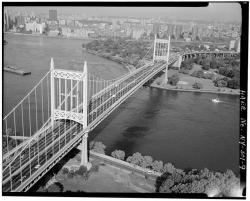

Built between 1819 and 1826, the Menai Bridge was the major structure on Britain's strategically important Holyhead Road connecting London with Holyhead and by sea to Ireland. Designed by Thomas Telford, the bridge's main span was 579 feet from tower to tower, the longest that had ever been attempted at this time. He used four sets wrought-iron eyebars to suspend the deck. These were made by William Hazledine at his Upton forge near Shrewsbury. Each bar was carefully tested in his Coleham shops before being pinned together and lifted into place.

The design of the Sydney Harbour Bridge closely resembles the Hell Gate Bridge over the East River in New York City, conceived in 1916 by noted engineer Gustav Lindenthal and his chief assistant, O.H. Ammann.
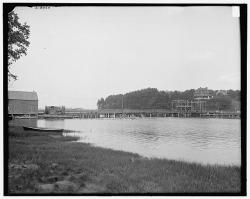
Sewall's Bridge is a singular example of an era when wooden trestle bridges carried highway traffic across New England waterways. It is the earliest pile-trestle bridge for which an authentic construction record exists, and the oldest for which builder's drawings survive. Spanning the York River, it was named for Major Samuel Sewall, Jr., the civil engineer who designed and constructed it.

The Second Street Bridge is a simply ornamented, wrought-iron structure. It is 18 feet wide and spans 225 feet over the Kalamazoo River. It was built to replace a dilapidated wooden bridge that had served the area for nearly 50 years.
The bridge is anchored to fieldstone abutments on each shore, and the deck is composed of wood beams. Iron lattice work provides structural stability and iron finials on the end posts provide aesthetic appeal. It includes a wooden pedestrian walkway.

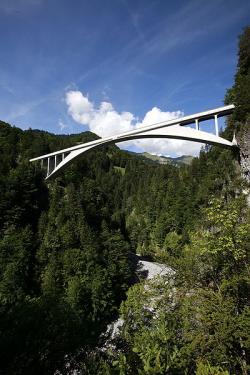
The Salginatobel Bridge, spanning the Salgina Valley ravine, is the earliest surviving three-hinged, hollow box arch bridge designed by Robert Maillart.

When opened in 1909, the Queensboro Bridge had the two longest steel cantilever spans in the world - 1,182 feet from Manhattan to Blackwell's Island and 984 feet from Blackwell's Island to Queens. These would remain the world's longest cantilever spans until the completion of the Quebec Bridge in 1917. The Queensboro Bridge has an overall length of 3,724.5 feet. It originally carried two elevated railway lines, two trolley lines, six carriage lanes and two pedestrian walkways.

A bridge across the Hudson at or near Poughkeepsie was planned starting in the early 1870s to primarily carry coal from the coalfields of northeastern Pennsylvania to New England. At the time there were no bridges between Albany and New York Harbor. Horatio Allen, soon to be President of the ASCE, was its first Chief Engineer. He designed a multiple span suspension bridge. Later the American Bridge Company started construction on a five span bridge but went bankrupt before it completed the first pier foundations.
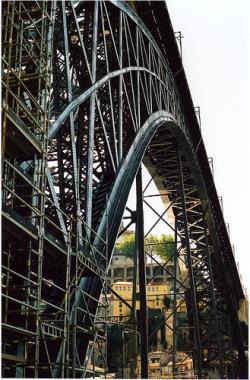
Built to cross one of the steepest valleys along the Douro River, the Ponte Maria Pia was the first major work to emerge from the French firm of Gustav Eiffel and Company, establishing Eiffel as an important bridge designer and civil engineer of his day. Resting on a parabolic arch spanning 160 meters, the Ponte Maria Pia was the longest iron arch bridge in the world at the time of its construction. The bridge's latticework construction reflects the later design of the well-known Eiffel Tower, erected in Paris to commemorate the International Exposition of 1900.
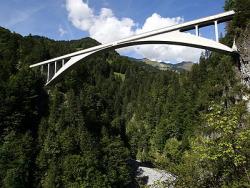
The Salginatobel Bridge, spanning the Salgina Valley ravine, is the earliest surviving three-hinged, hollow box arch bridge designed by Robert Maillart.
Maillart's 1901 invention of the concrete hollow box design became a major bridge building concept. In this design, the concrete arch…
Read More

The Second Street Bridge is a simply ornamented, wrought-iron structure. It is 18 feet wide and spans 225 feet over the Kalamazoo River. It was built to replace a dilapidated wooden bridge that had served the area for nearly 50 years.
The bridge is anchored to fieldstone abutments on…
Read More
Sewall's Bridge is a singular example of an era when wooden trestle bridges carried highway traffic across New England waterways. It is the earliest pile-trestle bridge for which an authentic construction record exists, and the oldest for which builder's drawings survive. Spanning the York River…
Read More
The design of the Sydney Harbour Bridge closely resembles the Hell Gate Bridge over the East River in New York City, conceived in 1916 by noted engineer Gustav Lindenthal and his chief assistant, O.H. Ammann.
The Sydney Harbour Bridge, with a span of 1,650 feet, is not only the longest…
Read More
Built between 1819 and 1826, the Menai Bridge was the major structure on Britain's strategically important Holyhead Road connecting London with Holyhead and by sea to Ireland. Designed by Thomas Telford, the bridge's main span was 579 feet from tower to tower, the longest that had ever been…
Read More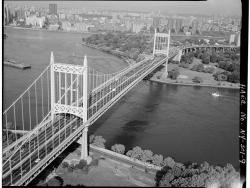
The Triborough Bridge Project is a three-branched waterway crossing that connects Manhattan, the Bronx, and Queens at a junction of the East River and the Harlem River in New York City. The complex structure includes a suspension bridge from Wards Island to Queens, a vertical lift span from…
Read More
This majestic viaduct was built during the golden age of railroading. It was at the western end of a major readjustment in grade and alignment of the Erie-Lackawanna Railroad, and had double tracks to carry the trains across the valley of Tunkhannock Creek. The Hallstead cutoff (between Scranton…
Read More

Designed by David B. Steinman, of Robinson & Steinman, New York City, the Waldo-Hancock suspension Bridge is a significant example of Steinman's work. David Steinman is considered among the most important suspension bridge designers of the 20th century. He earned an engineering degree from…
Read More
The structure has two segments: an East Channel bridge consisting of four 175-foot spans and three 240-foot spans crossing from Harrisburg to City Island; and a West Channel bridge, consisting of seven 175-foot spans crossing from City Island to Wormleysburg.
With 15 truss spans totaling…
Read More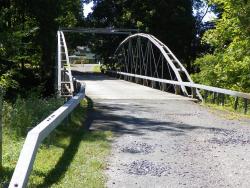
The Whipple Bowstring Truss Bridge was built from a design patented in 1841 by Squire Whipple. Whipple was the first person to understand the stresses in truss members and he developed the first theoretical formula to calculate stresses in the articulated truss. His bowstring truss was the first…
Read More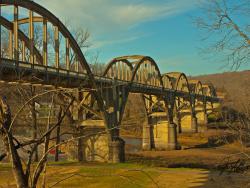
When this 1,850-foot concrete-arch highway bridge was built on the White River in a remote region of northern Arkansas - prior to the construction of upriver, flood-control dams - flash floods occurred frequently, sometimes causing the water to rise as much as one foot per hour. Construction…
Read More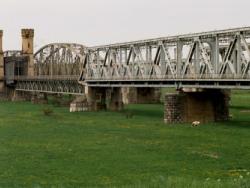
Conceived as one of the major structures on the Prussian Eastern Railway, the Old Wisla Bridge at Tczew originally consisted of six wrought iron spans. Due to Germany's invasion of Poland at the beginning World War II in 1939, only three original spans remain today. These remaining spans…
Read More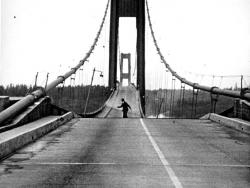
Taken together, the 1940 and 1950 Tacoma Narrows bridges mark a significant turning point in the design of long-span suspension bridges. The original 1940 structure was designed with one of the shallowest and narrowest stiffening elements of any long-span suspension bridge yet built. The…
Read More
In the 1940s and 1950s, New Orleans experienced growth. Unfortunately, access from the north to the City continued to be limited by Lake Pontchartrain. Driving around the Lake was a time consuming effort. During this time period, a renewed interest developed to provide a direct connection across…
Read More
"It remains today one of the great bridge engineering accomplishments for railway and highway bridges built in the country."
- Historic American Engineering Record, Southeast Regional Office, National Park Service, U.S. Department of the Interior, 2005
By the late 1880s, New…
Read More

